I think most of the 2013’s need a bit more time. I will defer to the more experienced tasters.
Photo of some Evangelho Vineyard Zinfandel grapes from the Facebook page of Mr Twain-Peterson (Bedrock):
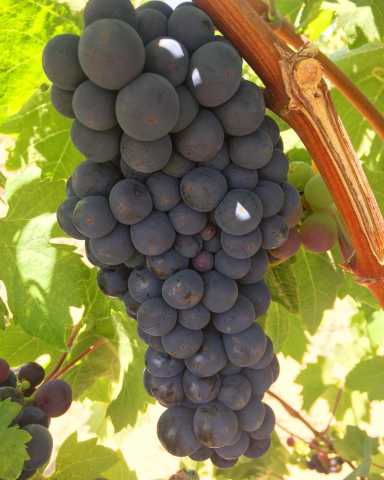
Stolen from another post/thread…
SF Chronicle
“Bedrock Wine Co. Takes Over Contra Costa’s Old-Vine ‘Evangelho Vineyard’”
by Esther Mobley
August 2, 2017
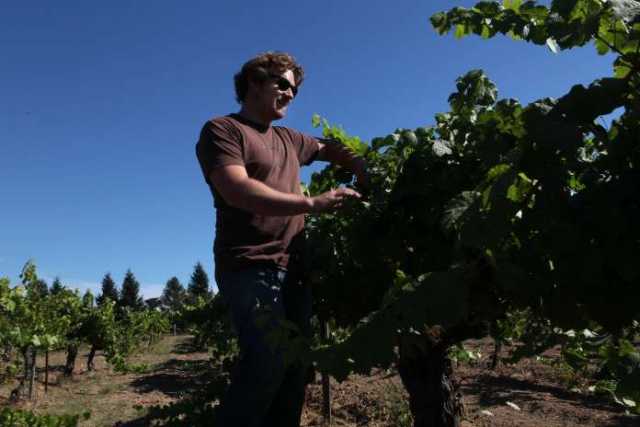
“Morgan Twain-Peterson in his vineyard on August 17, 2011.”
photo by Audrey Whitmeyer-Weathers, The Chronicle
"In a deal that marries already intertwined Bay Area wines and vines, Bedrock Wine Co. has taken over the ‘Evangelho Vineyard’ in Antioch.
"…‘For Frank, whose father started farming the vineyard in 1938, the idea of being forced to sell to a developer was repugnant,’ wrote Twain-Peterson.
“In the deal announced Tuesday, Bedrock purchased 10 acres of the vineyard from Evangelho. The remaining 26 acres are owned by PG&E and leased to Evangelho; Bedrock has taken over that lease. Manuel Carranza, the vineyard’s longtime foreman, will stay on. ‘He’s the tie that binds out there,’ said Twain-Peterson…”.
Mr Jake Neustadt of Bedrock Wine Company gives a run-down on the varieties found in the Evangelho Vineyard of Antioch, California.
In the “Evangelho Vineyard” video hosted by Jake, he states that the vineyard is interplanted to Zinfandel, Mourvedre/Mataro, and Carignan. He then explains that there are blocks which are regarded loosely as the “Zin block” or the “Mataro block”, based on the dominant variety in the given section of the vineyard. Each year, the makeup of the Bedrock “Evangelho Vineyard” wine will contain more or less of certain blocks in pursuit of the best end product.
Some pics of Old Vine Oakley Petite Sirah I picked earlier today. I thought you might appreciate these Drew.
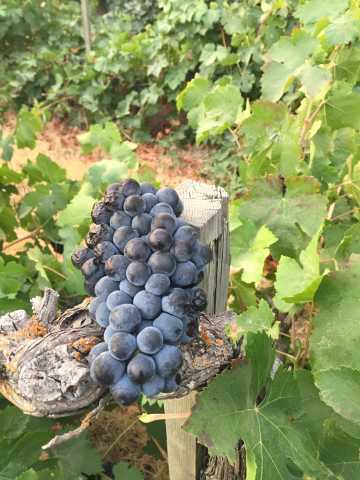
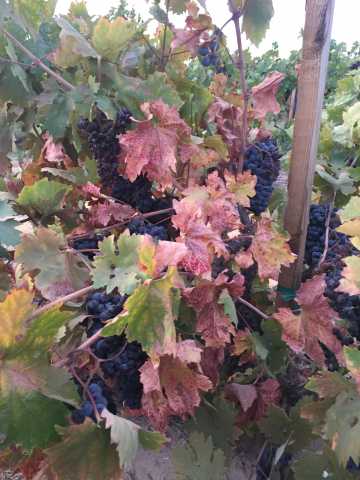
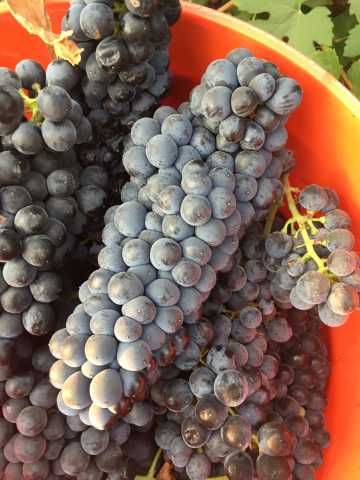
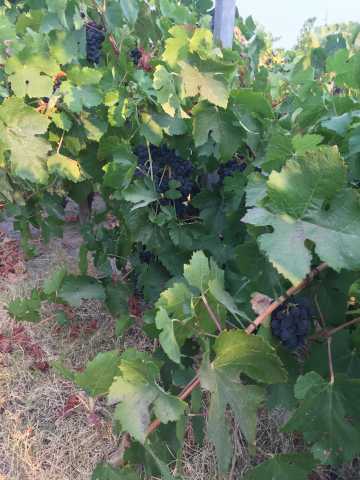
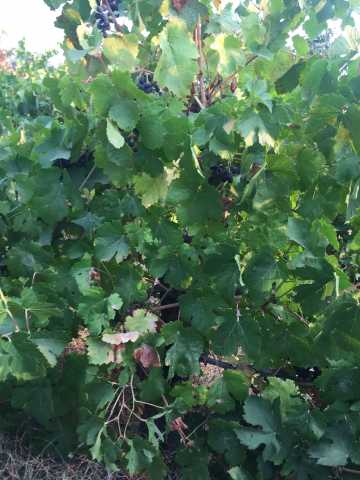
Awesome pics, Matt! Are you a “Wineo”, or do I need to sign up for another winery waiting list? ![]()
From MTP’s Facebook page…
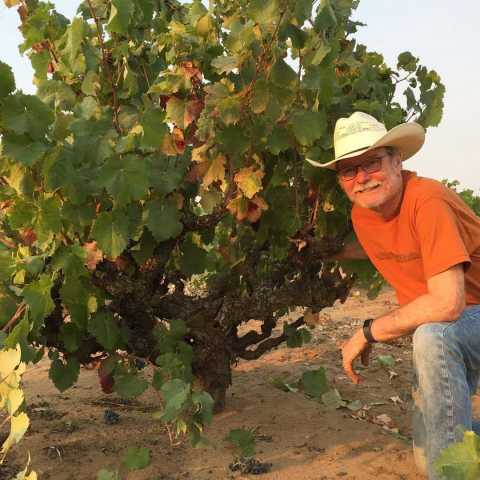
I was concerned about the weather in Contra Costa for the 2017 vintage until I saw your pics, Matt!
I’m just a home guy Drew. The same vineyard has Old Vine Zin in a separate block. There were some raisins on the petite for sure but after soaking for a bit it came out to just under 25 which is acceptable, I was worried it would be considerably higher than that but i tried to pick my clusters carefully. Some of the Zin looked amazing and some looked like it would be really high brix. I’ve made a lot of Zin the past few years which is why I went with the Petite. I think it looked a little better too. It was about 110 I think in Oakley the last couple days and last weekend was hot there too so from what I heard it really compressed the harvest in that area.
Thanks for the update, Matt!
With all of the talk about the heat in California, I was curious if Contra Costa County grapes we’re going to raisin-up. I would love to hear more about your adventures in home winemaking, specifically your thoughts on how accessible old-vine sites are to the home winemakers! ![]()
From the latest email from Three Wine Company:
“‘I have only experienced this very intense and fast paced harvest one other time, in 2004, in over 30 years of wine making,’ states winemaker Matt Cline. ‘Last year we had about only three days above the century mark, this year, I have lost count.’”
From December, 2016:
East Bay Times
“Farmers See Recent Rains Wash Away Drought Effects”
by Aaron Davis
December 16, 2016
"While the strong storms over the last two weeks dumped rain on mainly empty fields, growers in the East Bay are still rejoicing at the deep cleanse.
"…‘The big picture is that we’re off to a good start in Northern California,’ said Jeanine Jones, deputy drought manager with the Department of Water Resources. ‘This is only mid-December and on average, half of our statewide rainfall is in December, January and February. So we still have a ways to go in our wet season and Northern California is well above average.’
“…‘We’ve seen a sigh of relief from a lot of growers that are right at about half of their total seasonal average and we are halfway through the season,’ said Paul Verdegaal, viticulturist at the University of California Cooperative Extension in San Joaquin County. ‘Not only do they fill the soil profile in preparation for the spring, but they flush the salts we gathered in the recent drought.’
"Verdegaal said that even when farmers irrigate, the soil builds up salt and needs to be flushed with a hard rain.
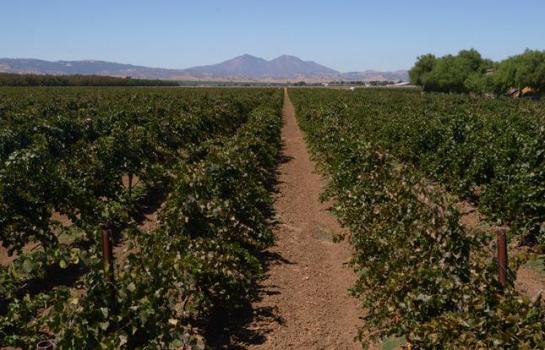
"Matt Cline, winemaker and owner of Three Wine Company, doesn’t irrigate his vineyards in Oakley, though.
“‘Most of the vines out there are dry-farmed, so the rain is very important for them,’ Cline said. ‘Especially since we’ve had these breaks between the storms — it was a lot of water.’
"Cline said that the vineyards around Antioch and Oakley are special because they grow in sand that is 30 feet deep, with a hard clay basin at the bottom.
“‘The rain can drain very easily, so there’s no danger in the vines being underwater, but with the clay bottom 30 feet down, they can reach down and get it,’ Cline said. ‘The water that we got (on Thursday) will be there when in March, they start pushing.’"
EDIT: Added East Bay Times article on 2016 winter rains, boon for the 2017 season in the Oakley area.
Bedrock now has a YouTube video channel!
Bedrock Wine Co. YouTube Channel
Bedrock Wine Company’s website has this in its ever-expanding library of “Studies”:
“The Vines of Oakley”
https://bedrockwineco.com/the-study/the-vines-of-oakley/
*** EDIT ***
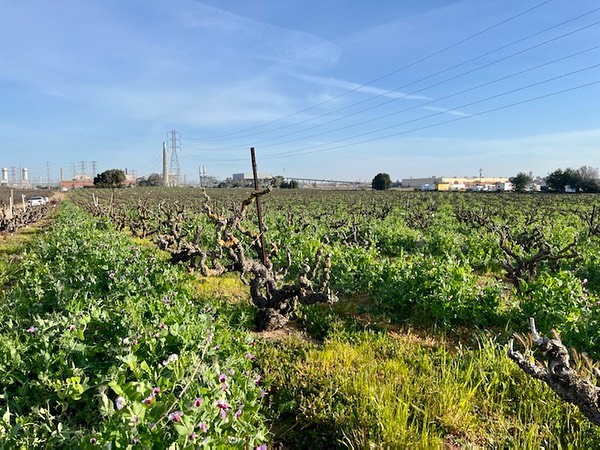
Morgan Twain-Peterson Instagram post:
March, 2023(?)
https://www.picuki.com/media/3041232093309802880
“Rain makes cover crops, cover crops make vigor, vigor makes our vineyard feel a little frisky. That’s how that silly song goes right? The lovely winter rains have raised a gorgeous cover crop full of nitrogen fixing legumes on the sands of ‘Evangelho Vineyard’ which should help it recover some of the vigor lost over several years of extreme drought.”
Hey Drew, here’s your video embedded:
oqwmxD6n3jU
The way you do it is to use the “youtube” button (at the top right above the posting window). In spite of what it says (to use the full URL) you ONLY paste the part to the right of the “/” in between the
and the
, in this case oqwmxD6n3jU. This is the way it works on other forums also.
I am sometimes a little slow on the uptake.
Thanks, Clyde!! Whereya been?
I don’t think so, it’s a little unintuitive to have to ignore the directions ![]()
Super busy, just coming up for air. ![]()
I see people on the board posting vimeo links so I just tried the same trick with a vimeo video (using the vimeo button and pasting just the number after the “/”), but it doesn’t seem to work. You get nothing embedded at all.
Looks like this Tuesday we finally get to order some of this one.
I just saw the save-the-date email from Bedrock. I am super-excited about the Pato Vineyard red wine! ![]()
I was searching online for any information on the “Live Oak Vineyard” Mourvedre, which Morgan & Co. use in the newer iterations of the Bedrock “Ode to Lulu” Rosé. Alas, no great details exist on the internets for extensive data on the vineyards of Oakley and Antioch (aside from a bit on the “Evangelho Vineyard”).
I DID happen to stumble upon a cool book, courtesy of Google Books:
Soil Survey of Contra Costa County, California by Lawrence E. Welch (1977):
https://books.google.com/books?id=3UlDAQAAMAAJ
Search on pages 20, 60, & 115 for information about the Dehli Soils. The book’s author advises farmers of almond trees or grapevines on such soil to apply irrigation and cover crops:
“Cover crops should be planted and moved by rotary mower during the growing season to control soil blowing. (60-61)”
Image: “Residents enjoying a picnic on an Antioch Sand Dune”
from Antioch Dunes National Wildlife Refuge website
To my limited knowledge, irrigation is uncommon in Antioch/Oakley grape-growing. Sandy soils do not retain water. The water table is low in the eastern part of Contra Costa County.
Bedrock might be the only operation employing the the use of cover crops in eastern Contra Costa’s vineyards.
I wish there existed more online resources for Contra Costa County vineyard maps, soil-for-dummies (because not all of CoCo is sandy), breakdowns of different grape plantings (grid maps, etc), blah, blah, blah…
EDIT: Additional Online Resources
Wine Enthusiast Magazine website:
“Understanding Sandy Soils in Wine”
by Jaime Goode
https://www.winemag.com/2021/10/14/sandy-soil-wine
Lodi Growers
“The Ultimate Goal of Vineyard Soil Management: Optimized Root Zone Function”
https://www.lodigrowers.com/optimized-root-zone-function/
Lodi Growers website:
“NRCS Soil Survey Information Important to Vineyards”
https://www.lodigrowers.com/nrcs-soil-survey-information-important-to-vineyards
USDA NRCS website:
“Published Soil Surveys for California”
https://www.nrcs.usda.gov/wps/portal/nrcs/surveylist/soils/survey/state/?stateId=CA
USDA Web Soil Survey website:
Interactive Map
https://websoilsurvey.sc.egov.usda.gov/App/WebSoilSurvey.aspx
UC Davis’ CA Soil Resource Map website:
WebSoil Map
https://casoilresource.lawr.ucdavis.edu/gmap/
I love your passion here Drew - and I’m all over the Pato with the new Bedrock release.
Oakley, California, is the first city that pops into my head when I hear “Contra Costa wine”.
Yes, the most famous ancient-growth planting in the area - cough “Evangelho” - is across the highway, in Antioch. For total acreage of old-vine, own-rooted, dry-farmed vineyards, however, Oakley takes the cake.

There have been a few false-starts concerning Oakley’s vineyard preservation efforts. However, some advances have been made:
• A +100-year-old vineyard selection of Alicante Bouschet vines was transplanted across Main Street, and survived. The new location is known as the “Walnut Meadows Vineyard” or the “Legless Lizard Parcels”.
• A plot of centenarian Carignan vines were preserved when the Dutch Slough Tidal Restoration Project was initiated. Matt Cline of Three Wine Company championed efforts to allow the vineyard to remain undisturbed when the original plans sought to uproot it.
• The City of Oakley developed the Agricultural Conservation and Viticulture Program in order to identify older vineyards and to formulate a meaningful approach to prevent them from being ripped up. Two stages of the ACVP were completed, but then it was tabled.
ACVP Phase One (PDF download)
ACVP Phase Two (PDF download)
East Bay Times article
“Oakley to Boost Efforts to Protect its Ancient Grapevines”
by Paula King
October 2, 2017
“The first phase was focused on educating the public about Oakley’s rich vineyard history, completing an inventory of prime parcels with vineyards and reaching out to vineyard land owners.”
According to Agricultural-Natural Resources Trust Executive Director Liz DiGiorgio, “…Phase Two built upon updating the map and inventory and reaching out to landowners who may be interested in participating in conservation easements on their land and bringing power to the vineyard at Walnut Meadows in order to create a show piece for the city’s viticulture program.”
“According to [Oakley Vice-Major Randy] Pope, there has been some interest in the program, but no property owners have stepped up because they are holding on to the land for retirement, or they have fears of entering into agreements with local government.”
So, short of securing the necessary grant to implement wide-sweeping changes, what can the City Council do to guarantee the future of ancient vineyards?
“‘We can create signs now for a couple of the existing vineyards,’ Councilwoman Claire Alaura said. ‘It is one more thing for people to recognize about our community. It is not just a bunch of vines. There is a specific use, and we are taking pride in what they are.’”
Historically significant agricultural properties are not afforded the same protections as man-made structures (houses, bridges, churches, temples, etc). Such landmarks would be useful, albeit in the sole capacity of geographical identifiers.
The longer I reflect on the limited options available to Oakley’s officials, the more cognizant I am of their limited strength in slowing the rate of vineyard loss.
I will discuss more thoughts on this in future posts.
I welcome any and all input from fellow Berserkers!


